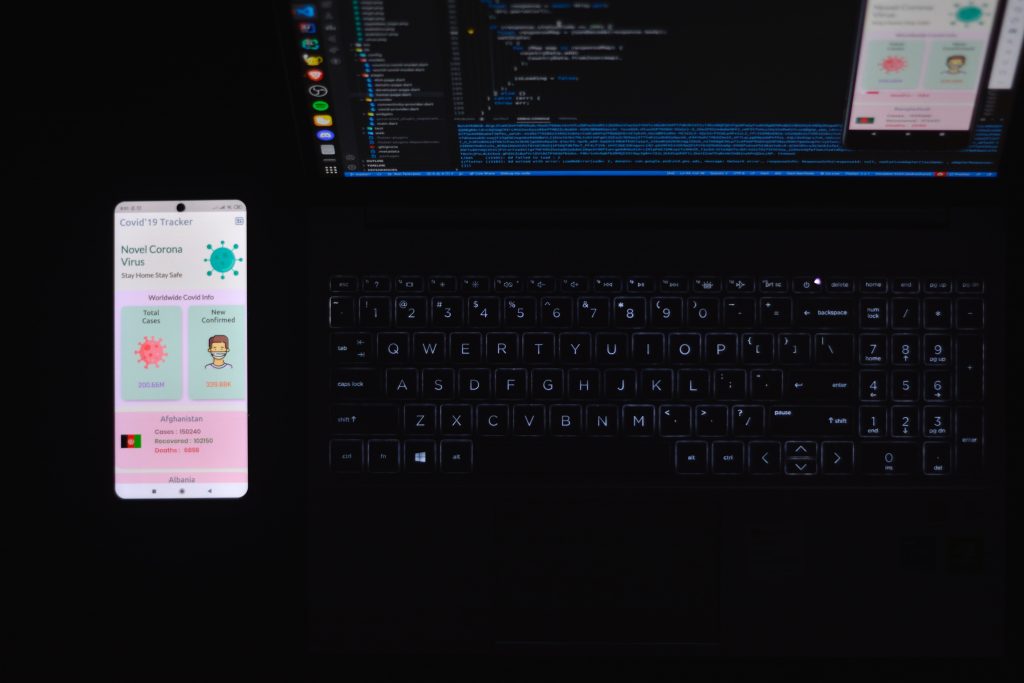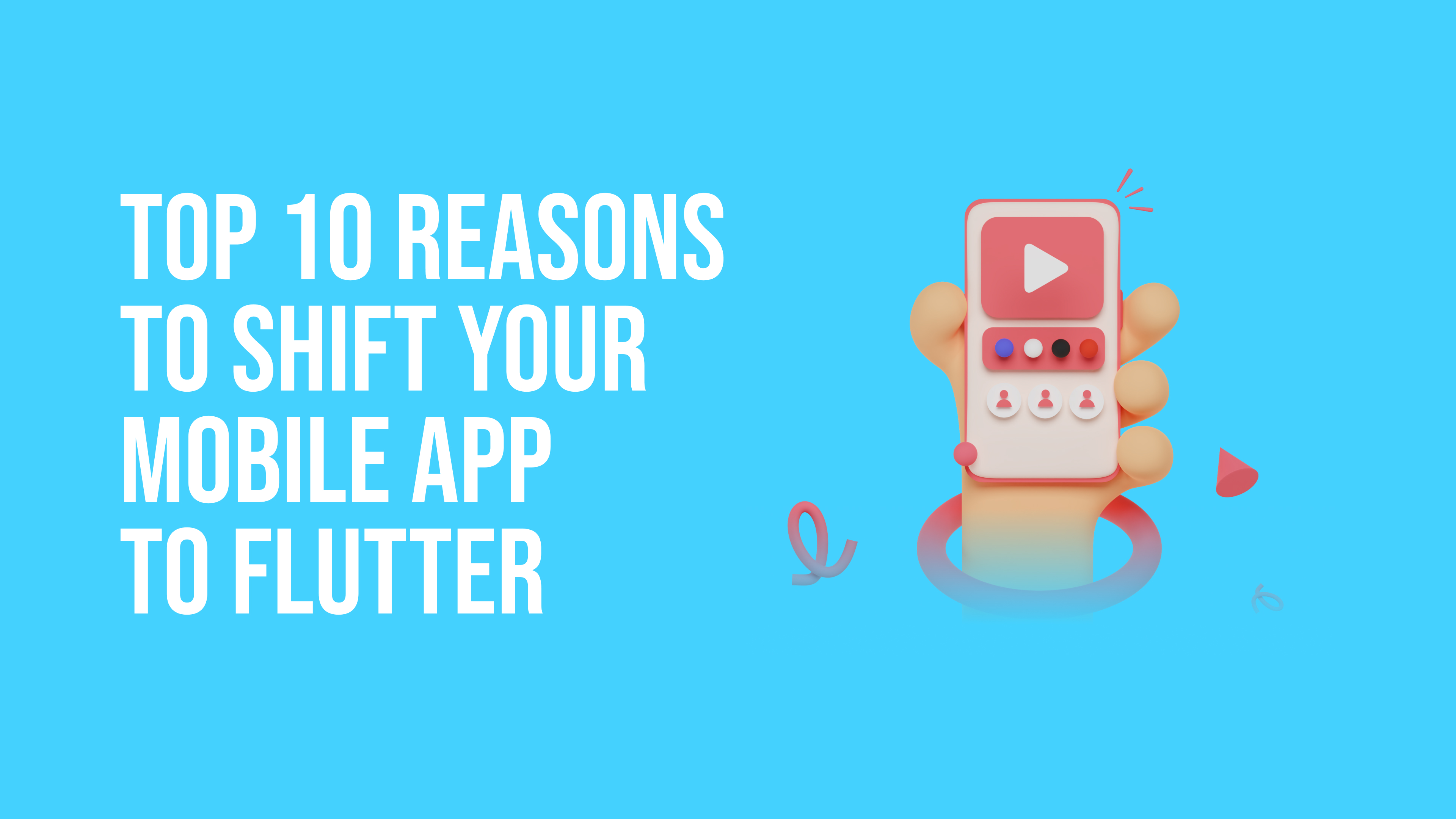Flutter is quickly picking up its pace in landing a respectable spot in cross-platform app development. Although being reasonably young, it is quickly surpassing its alternative frameworks like React Native, Xamarin and AngularJS. Both startups and established businesses are also quickly switching from native app development to go cross-platform.
First let’s understand what these terms, native and cross-platform development mean.
Native vs Cross-Platform Application Development

Native app development means to develop mobile apps exclusive to one platform; built with tools and languages that are specific to a single platform.
Native apps deliver exceptional user experience with high performance; visuals are better tailored to the platform UX. However, the cost of development is high as concurrent development needs to run for different platforms.
Some native mobile programming tech stacks are Objective-C, Swift, Apple Xcode, iOS SDK (for iOS) and Kotlin, Java, Android Studio, and SDK tools (for Android).
On the other hand, cross-platform app development creates mobile apps that work on various platforms. React Native, Xamarin, Flutter are some tools that allow cross-platform development.
Cross-platform development helps save time and resources, but you risk losing the quality in the process. It is difficult to tailor apps for different platforms, and the apps will need an extra layer of abstraction when running, so the performance is low.
What is Flutter?
Flutter is an open-source UI software development kit (SDK) created by Google. It is used in cross-platform application development for mobile, desktop and the web from a single codebase that can be used for multiple platforms. Flutter is a popular choice for small startups as well as eBay, Alibaba, The New York Times and of course Google.
Flutter was officially launched in 2017. In 2021, Google presented Flutter 2.0 in order to support desktop application development. It is not a framework or library that is used in addition to other technologies, but rather a UI software development kit.
Flutter is a great alternative to other cross-platform SDKs that allows us to create beautiful, visually pleasing applications in a record-breaking time. It includes a set of various tools, including libraries, frameworks, documentation, APIs, etc. sufficient enough to build a fully functional application.
Flutter is written in Dart programming language (also developed by Google) which makes it easy to comprehend for engineers who have experience working with JavaScript or Java.

Why Should You Switch To Flutter?
Here’s why you should switch your mobile app to Flutter, whether you have a startup business or a running, breathing business, Flutter has some to offer for all of us:
- Single Codebase:
Cross-platform development means you can run your app on various platforms all at once; iOS, Android and now the web. With a single codebase and a few adjustments, of course, your job is much easier and ready to launch in a much shorter time.
- Fast Development:
The changes made in the codebase are immediately visible in the app. The hot reload feature of Flutter helps you quickly experiment with different UIs, add features and fix bugs. This real-time impact of a slight change in the codebase makes the work much easier and erases the need to recompile the code which prolongs the development process.
- Powerful User Experience:
Flutter provides the flexibility to use ready-made widgets to create applications. Flutter app developers can gain access to a wide selection of widgets and UI components that native app developers leverage to deliver an excellent user experience. You can also customize widgets to constitute more complex layouts.
- Front-end and Back-end With a Single Codebase:
Dart is the programming language of Flutter which allows developers to organize codes with ease. Unlike android app development, you can use a single language to handle frontend and backend development. Further, you will not have any difficulty learning to code if you have any previous experience working with C#, Java and TypeScript.
- Lower Development Cost:
You can create apps for both iOS and Android with the budget and human resources required for one platform. So, if you have a modest budget and grand ideas, Flutter is the way to go.
- Smooth Transition From Any Platform:
Even if your app was built natively for iOS or Android, Flutter can provide an almost seamless experience migrating your existing app and provide support of multiple platforms while retaining your quality.
- Faster and Easier App Testing:
Flutter renders the UI using its own high-performance graphics engine. This framework uses Skia that performs rendering directly on a platform-provided canvas. Therefore, the testing of the architecture of a Flutter app is less dependent on each platform; making the testing easier and faster.
- Large Community Support:

Since its launch, Flutter has already been recognized and appreciated by a large number of developers. Apps made with Flutter are also guaranteed years-long support from Google. Google will continue to invest in the technology, including new features and fixing bugs. Flutter is also being used in Google projects like Google Fuchsia, so you can be sure Flutter will last a long time.
- Open Source Catalogues :
An ample choice of open source packages are provided which makes it easier for a developer to create any type of application using Flutter. The package library is still growing as Flutter is relatively young; and soon with the contribution of thousands of developers, Flutter will soon be a leading SDK along with React Native.
- Creating MVPs:
Developers need to create MVPs (Minimum Viable Product) to demonstrate how the end product will look to investors. So, if you want to ensure a promising app, you can use Flutter to quickly create an MVP and get the investors on board with a high-quality app experience.
Besides these, Flutter also adds the flexibility to APIs to include animations even in the smallest codes. It also provides features identical to native SDKs which can be built into one’s own codebase as plugins. Flutter also makes it easy and quick to integrate with Firebase and provides incredible support to go serverless through cloud storage, real-time database, hosting and more in one single package. Coding is dynamic and efficient. And so much more.
With the ever-growing developer community, Flutter is bound to stick around for quite a significant time. With each new version available, it will only continue to grow and improve. So, picking Flutter for mobile app development is a wise choice and it will give you long-term benefits.

